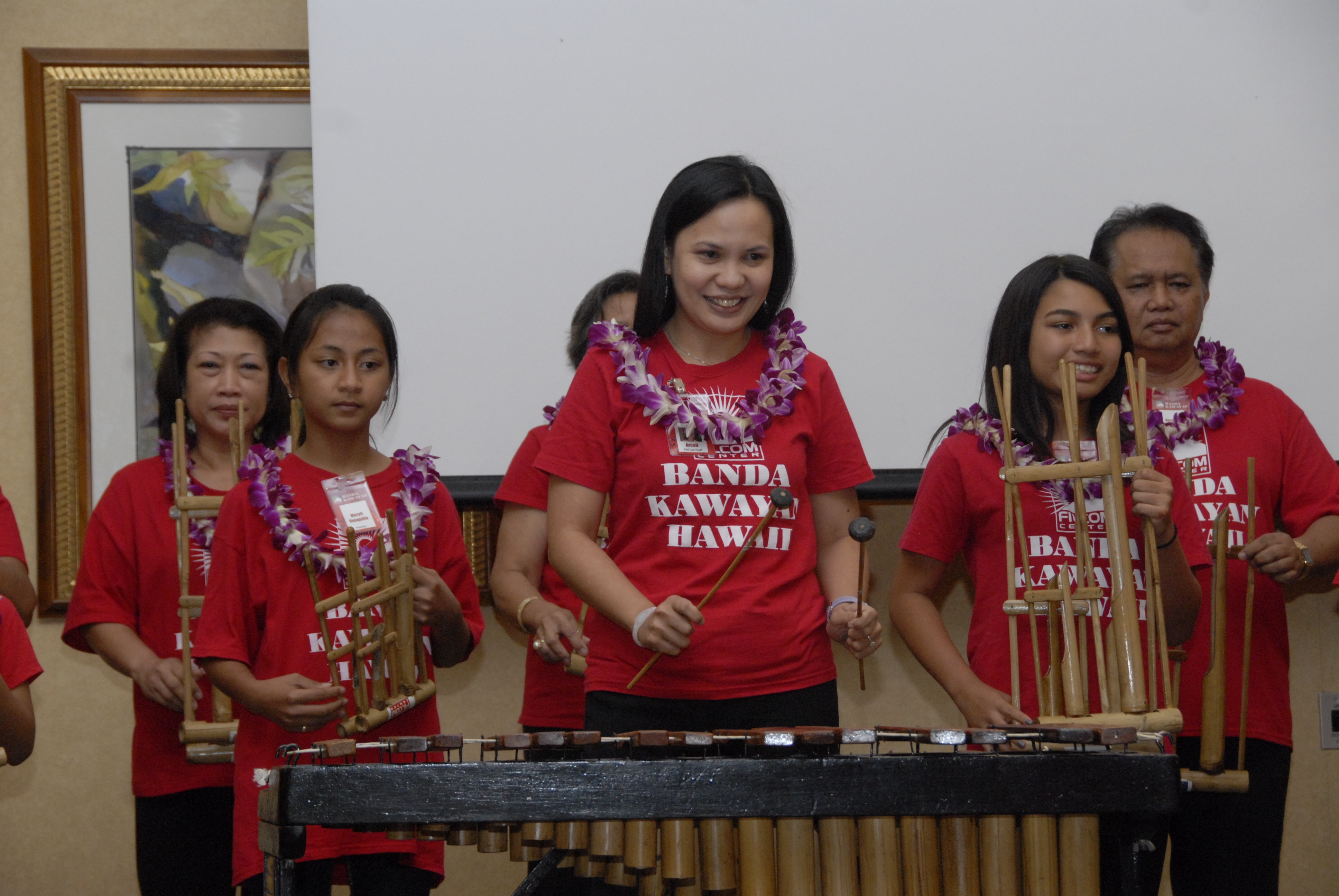SCHOFIELD BARRACKS, Hawaii - On cue, audience members arose from their dinner tables, turned to their neighbors, embraced them and greeted them with, "aloha."
"Aloha is such a strong brand for Hawaii around the world ... it's known in some of the farthest corners of world," said Peter Apo, a trustee with the Office of Hawaiian Affairs. "People may not know where Hawaii is or much about the people, but they know that the word aloha means something good."
Apo explained that aloha is the "unconditional extension of trust." He then asked audience members to greet each other with aloha.
He spoke at the quarterly U.S. Army Garrison-Hawaii Distinguished Lecture Series to an audience of 164 at the Nehelani, here, April 7. USAG-HI's Native Hawaiian Liaison Office sponsors the free series that features eminent Native Hawaiian lecturers who share their cultural knowledge with the USAG-HI community.
These types of cultural events "create opportunities for the military and local communities to come together to learn more about each other (and) to look for commonalities," said Col. Douglas Mulbury, commander, USAG-HI, in his welcoming remarks.
Apo's talk, "Hawaii: A Cultural Primer on Evolution and Diversity," started with the discovery of the Hawaiian islands and ended with an overview of modern Hawaii's melting pot of cultures.
About 1,500 years ago, the Polynesians sailed from the Marquesas Islands and discovered the Big Island. They only had the stars to use as a guide. Apo said this Polynesian age of discovery - sailing the seas in canoes without the benefit of seafaring instruments or a rudder - is the Polynesians' greatest achievement.
"That is an amazing feat," he said.
Captain James Cook's discovery of Kauai in 1778 opened Hawaii to the west; Protestant missionaries arrived on the Big Island in 1820. The islands soon became a port for whalers, seaman and traders, thus starting an infusion of different cultures into Hawaii though the centuries, including Asian immigrants who worked in the pineapple and sugar fields in the early 20th century.
With a multitude of cultures, there's bound to be conflicts, he said, but "Hawaii is still the most tolerant place in the world."
Surveying the audience from his podium, Apo reminded Soldiers, families and Army civilians they are the latest in a long line of visitors to the island.
He also told the audience that the "modern" concept of sustainability was practiced by Hawaiians hundreds of years ago. The ancient Hawaiians had many words for the word "rain," depending on its intensity and direction. They developed that type of appreciation for nature through observation and respect, Apo said.
A buffet followed Apo's talk. During dinner, the Banda Kawayna, a Filipino bamboo orchestra, performed songs such as "Spanish Eyes" and "Never On Sunday."
See more Distinguished Lecture Series photos on Flickr at http://www.flickr.com/photos/usag-hi/sets/72157626351694781/.
Learn more about Hawaiian culture
Email nhliaison@gmail.com or call 808-655-9694 for information about the latest Native Hawaiian cultural events offered to the USAG-HI community. Free hula workshops are offered each Monday at Army Community Service or the Kalakaua Community Center, Schofield Barracks. Free monthly interactive workshops are also offered. April's workshop offers instruction on lei making.


Social Sharing